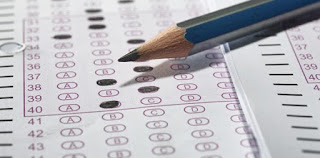2. A 65-year-old male is brought to the emergency department after a syncopal episode and is admitted to the hospital for further work-up. Past medical history is significant for coronary artery disease and hypertension. He is on a daily dose of aspirin, metoprolol, rosuvastatin, and lisinopril. Vital signs are pulse rate 62/min, blood pressure 135/85 mmHg, respiratory rate 15/min, and temperature 98.6 F (37 C). Physical examination reveals a fourth heart sound with no murmurs or gallops. Overnight there are intermittent episodes of atrial fibrillation without symptoms that convert spontaneously to sinus bradycardia at 45 bpm. Which of the following would be the best therapy?
A. Propafenone
B. Beta-blocker
C. Verapamil
D. Dual Chamber Pacemaker
E. Single Chamber Pacemaker
E. Single Chamber Pacemaker
Click the button below to view answer:

Comments
Post a Comment
Drop your thoughts here, we would love to hear from you